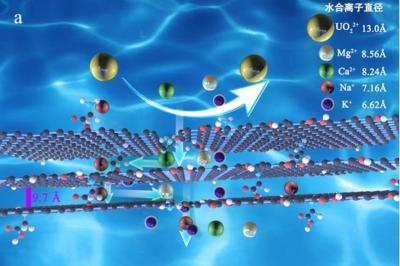Researchers at the Institute of Modern Physics (IMP) of the Chinese Academy of Sciences (CAS), in collaboration with teams from China's Lanzhou University and Hebei University, have developed a graphene oxide-based method of pre-enriching uranium in seawater by membrane filtration.

In their study, the scientists fabricated a new type of glycine cross-linked composite graphene oxide (GO-Gly) membrane with good ion sieving properties, which can meet the demands of uranium pre-enrichment in seawater.
According to the researchers, the cross-linking of GO by glycine not only overcomes the swelling defect of GO membrane in solution, but also fulfills the requirement for the channel size of uranium separation from the main coexisting ions. Moreover, the structure of the membrane can keep stable when immersed in water solution for a long time.
Then the researchers investigated the ion rejection and enrichment properties of uranium and the main coexisting ions in single ion solutions and simulated seawater, respectively. It was found that almost 100% of uranium was rejected by the GO-Gly membrane. In addition, only uranium was obviously enriched while the concentrations of the main coexisting ions kept nearly constant in continuously filtrating the simulated seawater with the membrane.
The results confirm that the GO-Gly membrane is a suitable candidate for uranium pre-enrichment in seawater. This new method combined with the traditional methods has the potential to greatly improve the uranium recovery efficiency and promote the real application of uranium resources in seawater.

